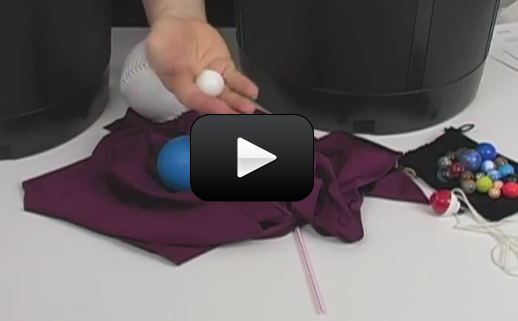What comes to mind when you think about empty space? (You should be thinking: “Nothing!”) One of Einstein’s greatest ideas was that empty space is not actually nothing – it has energy and can be influenced by objects in it. It’s like the T-shirt you’re wearing. You can stretch and twist the fabric around, just like black holes do in space.
Today, you will get introduced to the idea that gravity is the structure of spacetime itself. Massive objects curve space. How much space curves depends on how massive the object is, and how far you are from the massive object.
Materials
- Two buckets with holes in the bottom
- 2 bungee cords
- 3 different sizes of marbles
- 2.5 lb weight
- 0.5 lb weight
- 3 squares of stretchy fabric
- Rubber band
- 4 feet of string
- Fishing bobber
- Drinking straws
- Softball
- Playdough (optional)


These are standard fishing weights you can get from a sporting store, but you can use anything similar in place of it that is round and heavy for its size (even round-ish rocks).
I’m having trouble finding the 0.5lb and 2.5lb ball weights. Would you please share ideas of where these can be purchased?